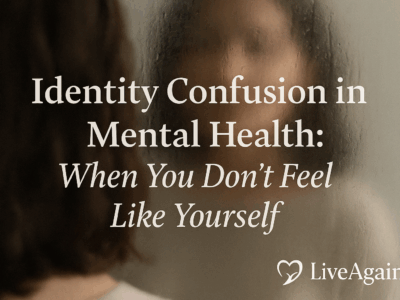Have you ever thought about what makes us different from other species on Earth? Yes, you’re right – the answer is “we can think”. While other species also think, we possess the unique ability to think about and plan for our future. The human brain is the most evolved organ we have, and it is capable of various higher-level cognitive functions, such as storing and recollecting memories, thinking independently, experiencing emotions, and interacting with reality in real-time. Understand what is Wishful Thinking and Positive Thinking.
Memories and imagination are our most powerful strengths, it make us truly unique. Thinking process – Thinking – and thoughts; thought – arises from memories and progresses to imagination. It is a psychological process that helps us understand, analyze, evaluate, and synthesize information received from our five sensory inputs, and helps in forming memories, experiences, thoughts, opinions, and judgments. Thinking also shapes our perception, influences our decisions, and governs our actions.
However, thinking can sometimes be positive or negative, real or just wishful. Let’s delve into the differences and interconnectedness between wishful thinking and positive thinking.
Wishful thinking is our tendency to believe what we want rather than what is realistic. It is driven by desires and hopes. Positive thinking, on the other hand, involves understanding and maintaining an optimistic outlook grounded in reality. Recognizing and understanding these psychological processes can significantly impact how we navigate life’s challenges and opportunities. Let’s understand interconnectedness between Wishful Thinking and Positive Thinking
Thoughts, Emotions, and Behavior: Interconnectedness
Thoughts, emotions, and behaviors are intricately linked together, and they form a dynamic cycle. A positive thought can evoke and uplift emotions, and drive positive emotional experience and constructive actions. Conversely, negative thinking often triggers distress, and leads to self-defeating behaviors. In wishful thinking, while experiencing comfort, it might create unrealistic expectations, and having potential for lead to disappointment. Positive thinking grounded with reality, and helps in foster resilience and effective real life time interactions. Understanding this interconnectedness can be a key to cultivate a healthy mental state and successes in life. By consciously shaping our thoughts, we can influence our emotional well-being and quality of life positively.
Understand: Difference Between Wishful Thinking and Positive Thinking
Wishful Thinking:
1. Driven by Desires: Reflects what we want rather than what is possible or realistic.
This suggests that wishful thinking prioritizes our personal desires and fantasies over practical realities. It often involves imagining ideal outcomes without considering whether they are feasible or achievable.
2. Unrealistic Expectations: Often ignores the practical challenges and limitations of a situation.
By focusing on the best-case scenario, some times we may overlook the constraints, obstacles, or resources needed to make something happen. This sets them up for potential failure, as the foundation for their plans is not grounded in reality.
3. Avoids Accountability: Relies on external forces or miracles to achieve outcomes.
When wishful thinking dominates, individuals may shirk responsibility for their actions, and hope external factors such as-: luck, divine intervention, or others’ efforts – will resolve their problems. This deflects the need for personal effort and strategic planning.
4. Short-lived Comfort: Provides temporary emotional relief without real problem-solving.
Wishful thinking can act as an emotional escape, offers us a brief sense of hope or relief. However, since it doesn’t address the root cause of problems, this comfort can be experienced as fleeting and often leaves individuals back where they started, or worse.
5. Lacks Evidence: Based on personal hopes, with no factual basis.
This means, that wishful thinking often dismisses logic, data, or evidence in favor of subjective beliefs. It operates on the “it feels good, so it must be true” principle, which undermines rational decision-making.
6. Risk of Disappointment: When hopes are unmet, it can lead to frustration and despair.
When outcomes do not align with our expectations, we face emotional distress. The gap between anticipated results and reality can lead to disillusionment, and impact on our mental well-being and self-confidence.
7. Hinders Growth: Discourages proactive behavior and learning from experiences.
Wishful thinking often prevents individuals from taking constructive actions to solve problems or improve themselves. It fosters passivity, as we may rely on hope rather than engaging in the hard work necessary for growth and success.
8. Emotionally Reactive: Influences actions driven by fleeting emotions rather than logic.
Rather than carefully analyzing situations or making decisions with foresight, wishful thinking often leads to impulsive reactions based on temporary feelings. This can result in poor choices and avoidable mistakes.
In essence, while wishful thinking can be a natural human tendency to cope with uncertainty or difficult situations, over-reliance on it can have significant drawbacks. It is essential to balance hope and optimism with realism, accountability, and proactive problem-solving to navigate life’s challenges effectively.
Positive Thinking:
1. Realistic Optimism: Balances Hope with Practical Planning and Action
Positive thinking finds its strength when balanced with realism. Realistic optimism ensures that hope is not blind but rooted in actionable strategies. Instead of merely wishing for success, a person with realistic optimism sets achievable goals, identifies potential hurdles, and creates a step-by-step plan to move forward. This approach fosters a healthy mindset where positivity drives meaningful progress, and avoide the pitfalls of unrealistic expectations.
2. Encourages Problem-solving: Focuses on Finding Solutions to Challenges
Positive thinking thrives when paired with a problem-solving mindset. Instead of dwelling on what’s wrong, it shifts focus to what can be done to improve the situation. For example: in the face of a financial setback, a positive thinker might brainstorm ways to cut costs, increase income, or seek advice from mentors. This proactive approach turns challenges into opportunities, and reinforce the belief that problems are temporary and solvable.
3. Accountability: Emphasizes Personal Responsibility and Effort
True positive thinking recognizes that our thinking and actions play a vital role in shaping our circumstances and reality. In which accountability shifts the focus from external factors to personal effort and responsibility. For example: Instead of blaming others for a missed deadline, a positive thinker evaluates their own time management and learns from the experience. This mindset empowers us to take control over our actions, and foster a sense of ownership and reduce helplessness.
4. Sustainable Positivity: Builds Long-term Mental Resilience and Well-being
Positive thinking is very effective when it endures over time, it helps individuals remain optimistic even in tough and divers situations. For example: Practicing gratitude, maintaining a support system, and celebrating small victories contribute to sustained positivity. This resilience allows individuals to bounce back from setbacks, maintain mental well-being, and creates a cycle of sustained growth.
5. Grounded in Evidence: Derives Strength from Past Successes and Learnings
Positive thinking becomes more powerful when it’s grounded in personal experiences and real accomplishments. For example: If someone is preparing for a difficult task, can recall similar challenges they’ve overcome in the past, using those experiences as a confidence booster. This evidence-based positivity reinforces self-belief and builds a reliable foundation for future successes.
6. Boosts Confidence: Encourages Self-belief and Motivates Forward Movement
Confidence is a natural byproduct of positive thinking. It motivate individuals to take risks and pursue their goals with determination. For example: A positive thinker facing a job interview focuses on their strengths and prepares thoroughly, trusting in their abilities to succeed. This self-assurance not only enhances performance but also inspires others around them to adopt a similar attitude.
7. Fosters Growth: Promotes Adaptability and Learning from Setbacks
Positive thinking encourages individuals to view failures as stepping stones rather than dead ends. For example: After a business venture fails, a positive thinker analyzes what went wrong, gains new insights, and tries again with an improved strategy. This growth-oriented mindset helps individuals adapt to changes and continuously improve.
8. Emotionally Intelligent: Guides Actions with a Balance of Logic and Empathy
Positive thinking paired with emotional intelligence ensures actions are thoughtful and considerate. It balances logical reasoning with empathy for oneself and others. For example: When resolving a conflict, a positive thinker listens to all sides, seeks to understand others’ emotions, and proposes solutions that benefit everyone involved. This balanced approach strengthens relationships, improves decision-making, and fosters a harmonious environment.
Wishful Thinking and Positive Thinking: How It Can Affect an Individual’s Life
Emotional Impact:
Wishful thinking can create unrealistic expectations, and often lead to disappointment and diminished self-worth when hopes are not realized. Positive thinking, in contrast, nurtures emotional resilience, enable individuals to handle challenges gracefully. By fostering constructive emotions, positive thinking enhances overall happiness and reduces stress.
Behavioral Outcomes:
Individuals guided by wishful thinking may procrastinate or avoid necessary actions, and expect external solutions. Positive thinkers, however, adopt proactive behaviors, and work diligently toward their goals. This approach not only achieves tangible results but also builds a sense of accomplishment and self-efficacy.
Realistic Positive Thinking and Its Benefits
Realistic positive thinking bridges optimism with practicality, and balance mental health. It reduces anxiety by replacing catastrophic thoughts with rational and hopeful perspectives. It helps in emphasizing achievable goals and manageable steps, and also helps in building self-confidence and emotional stability. Positive thinking promotes physical health by lowering stress levels and encourage healthier lifestyle choices. It also fosters better relationships through improved communication and empathy. In professional settings, it helps in enhancing motivation, productivity and innovation. Ultimately, realistic positivity cultivates a fulfilling life by aligning aspirations with actionable efforts.
How Psychologists Can Support You
Psychologists are skilled in identifying unhelpful thought patterns and guide individuals toward healthier mental frameworks. Through cognitive-behavioral therapy (CBT), they help to replace wishful thinking with realistic positivity and action. Psychologists offer tools for stress management and emotional regulation. They encourage self-awareness, and help in enabling individuals to identify triggers and responses. Regular counseling sessions build resilience, and empower individuals to face adversity. Psychologists can help you in bridging the gap between your hope and action.
Live Again India Mental Wellness: Supporting You
At Live Again India, we believe mental wellness is a journey, and you are not alone. Our experts provide compassionate guidance, and support you navigate challenges with confidence. From addressing wishful thinking to cultivating realistic positivity, we are here to support your growth. Together, we can foster a healthier mind and a brighter future.
If you are experiencing any mental health issue, or know someone, who is suffering. Seek Professional Help and talk to your mental health expert. Your mental health care is our priority. Your life is precious; take care of yourself and family. You are not alone. We are standing by you. Life is beautiful. Live it fully. Say yes to life. Welcome to life.



